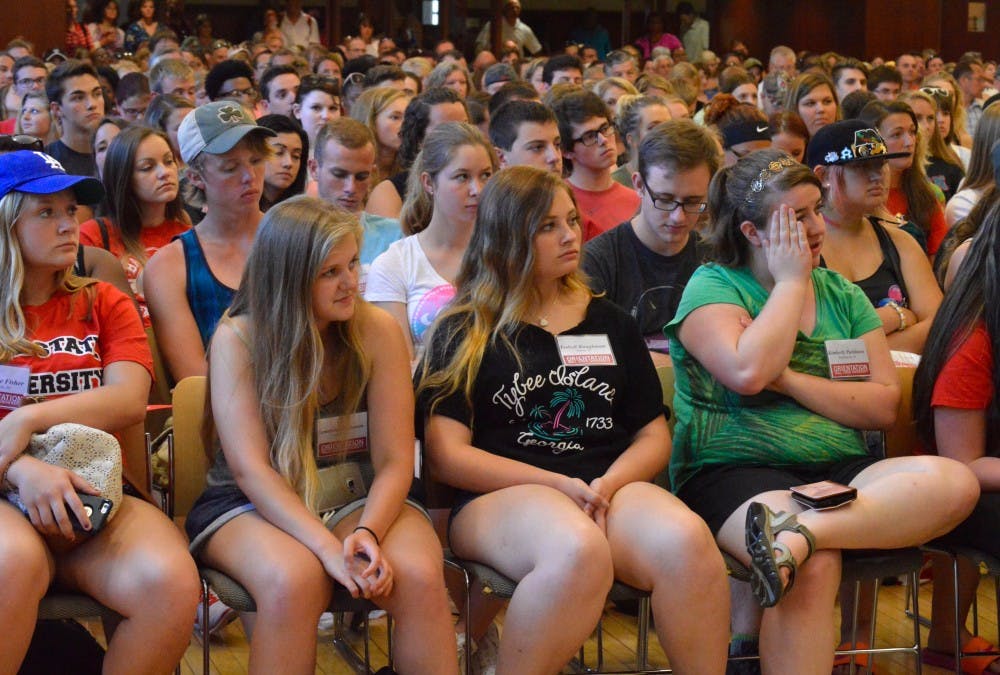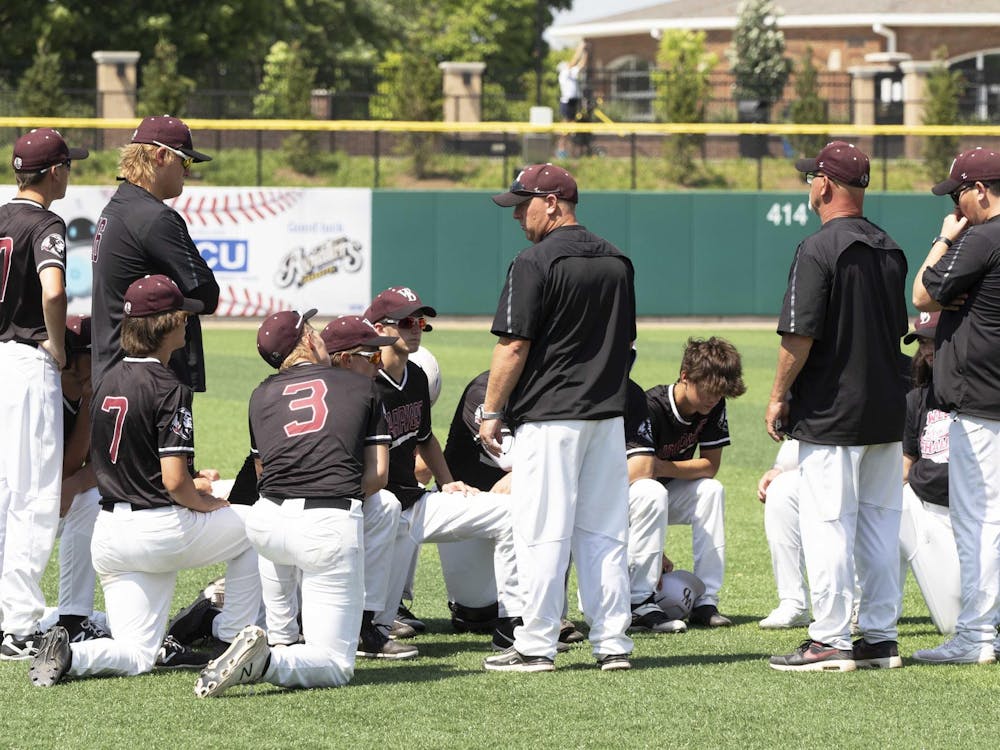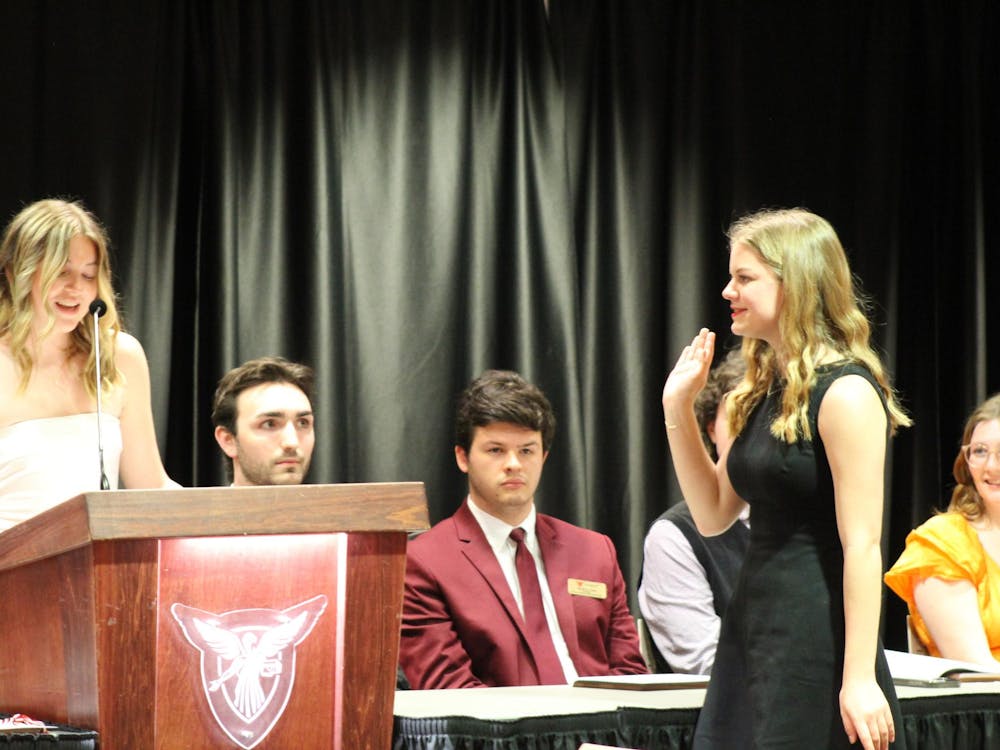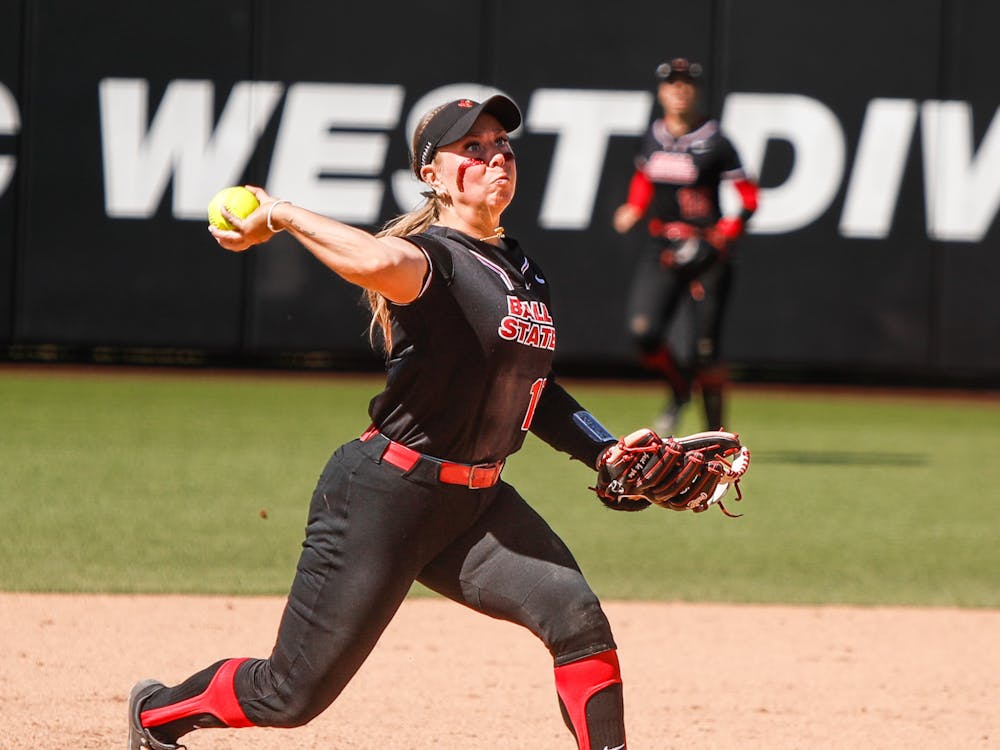Student and family surveys are online. There are different surveys depending on if the student is living on campus or commuting. You can find them here .
The first step to becoming a Cardinal is to get through freshman orientation, and the incoming class of 2020 has already had several groups complete it in the last few weeks.
Orientation for Fall 2016 began June 6 and will run until July 14. For first-time freshmen who start classes in August, the program runs as a two-day session.
Students who have already completed it experienced icebreaker games and team bonding exercises with their orientation leaders, help with academic planning and many lectures throughout the days, which some students said made them "zone out."
While leaders said every topic is important — covering topics such financial aid, housing and career services — the length of the lectures is one of the most common complaints from both students and parents.
Dalton Puller, an incoming freshman business and sports administration major, said he enjoyed orientation as a whole, but the long meetings were not enjoyable. He said those sections of orientation were really the only thing that could be improved.
“I didn't really like amount of lectures. They should also have the breaks be longer ... because when you're sitting there for two hours, a one-minute break isn't going to cut it," Puller said. "Pretty much everyone has to go to the bathroom, and if you get stuck in line to do that then you end up missing important information."
Puller said he wished leaders could just present the main topics and leave out some of the others, as — to him — they weren't all equally important and some felt too time-consuming.
Lindsey Speer, associate director of admissions and orientation, said while the sessions may be long, they are beneficial for students and families.
“We hear that sessions are sometimes long or that it can be a lot of sitting, but in the end, they realize how much they have learned and how much fun they are able to have with members of their group and with the orientation leaders,” Speer said. “Families often comment on how much information they received — sometimes information overload, but how helpful and useful the information was."
Speer said the information can help parents feel comfortable knowing their student has access to different resources and services to ensure their safety while at Ball State.
Besides just supplying parents and students with information, some students said orientation made them feel ready to come to Ball State and finally be a Cardinal.
Kelcey Jones, an incoming freshman special education major, said orientation made her excited for her first year in college.
“My favorite part of the whole thing was when I got to split away, since I was an education major, and I got talked to about my major," Jones said. "It was so interesting and made it so real. Orientation helped me realize Ball State is where I want to be, and I'm so excited to be going here in the fall.”
But another complaint among students is regarding the Freshman Common Reader.
The Freshman Common Reading and Writing Experience serves as the first academic assignment for incoming freshmen, according to bsu.edu. Students receive a copy of the book during summer orientation along with support materials and are required to complete the related online writing assignment before arriving on campus.
This year’s book is "The True American," written by Anand Giridharadas and Rais Bhuiyan.
Puller said after talking to several upperclassmen on the unofficial Ball State University Class of 2020 Facebook page, he's learned that many students never read their Freshman Reader and said it never negatively affected them during college.
“They should not make us read a book and do an essay on it,” Puller said. “It's not even for a grade or anything. So I know that me and probably everyone else don't want to do 'busy work' that doesn't count for anything. It's just time consuming.”
Despite some complaints, for most students, freshman orientation is a fun time to get comfortable with campus and meet new people.
Randy Ziegelman, an incoming freshman acting major, said he enjoyed the two-day orientation and thought the orientation leaders helped make the experience fun for him.
“Orientation was a very beneficial and overall fun experience,” Ziegelman said. “The leaders and other students were incredible. They were fun, friendly, and I was very impressed at how professional they were. The best part was definitely being able to meet new people and getting to connect with them. Overall, it was a fun experience getting a taste of college life.”
Speer agreed, saying students typically say they love the orientation leaders.
“They are doing a fantastic job and [are] well representing orientation as well as Ball State University,” Speer said. The leaders are often what the students enjoy most, as they get them excited to come back in the fall, encourage them to make friends while at orientation and make their two days on campus enjoyable.
She said without the student leaders, the experience wouldn't have that "student perspective" it needs.
Orientation causes mixed feelings and reactions each year for both students and parents, which they can voice through an online survey the Office of Admissions and Orientation will later review.
Speer said there is always room for improvement for future orientations.
“The biggest challenge is ensuring we are continually meeting the needs and demands of our students, their families, our university as well as state and federal regulations,” Speer said. “We do our best to ensure success for every program we offer.”





